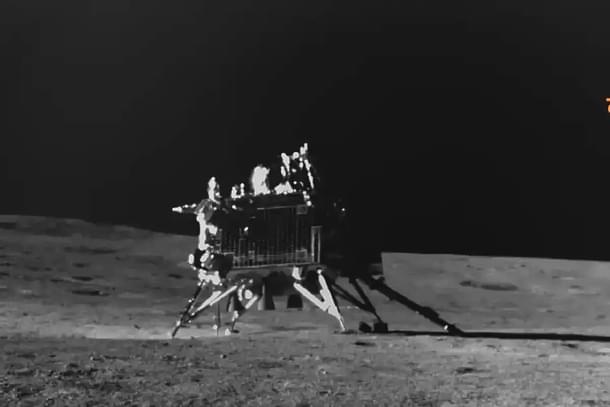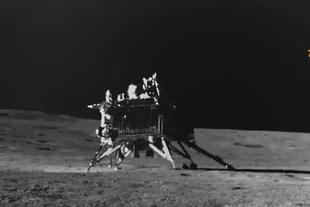Science
Chandrayaan-3: Vikram Lander Makes Second Soft-Landing On Moon, ISRO Shares Footage Of Test Proving Lunar Sample Return Capability
Swarajya Staff
Sep 04, 2023, 11:23 AM | Updated 12:03 PM IST
Save & read from anywhere!
Bookmark stories for easy access on any device or the Swarajya app.


In a remarkable achievement, the Chandrayaan-3 mission's Vikram Lander has not only met but exceeded its mission objectives.
This groundbreaking moment unfolded when, upon command, the lander's engines fired, elevating it by an impressive 40 cm as anticipated and then safely touching down 30 to 40 cm away from its initial position.
The successful hop experiment serves as a pivotal "kick-start" to inspire and energize future endeavors, including sample return missions and the ultimate aspiration of human exploration.
Such capability is needed for missions designed to collect rock and soil samples from the Moon's surface and bring them back to Earth for scientific analysis. Three countries — the United States (Apollo program), the Soviet Union (Luna program), and China (Chang'e series) — have already conducted successful sample return missions.
Chandrayaan-3 Mission:
— ISRO (@isro) September 4, 2023
ð®ð³Vikram soft-landed on ð, again!
Vikram Lander exceeded its mission objectives. It successfully underwent a hop experiment.
On command, it fired the engines, elevated itself by about 40 cm as expected and landed safely at a distance of 30 â 40 cm away.⦠pic.twitter.com/T63t3MVUvI
All systems on the Vikram Lander operated flawlessly, maintaining their nominal performance and overall health, ISRO has said.
Furthermore, critical components such as the Ramp, ChaSTE (Chandrayaan Terrain Mapping Camera for Stereo Topographic Evaluation), and ILSA (Instrument for Lunar Seismic Activity) were expertly folded back and then redeployed with precision following the successful experiment.
With the lunar night fast approaching, during which sunlight becomes scarce, the Pragyan rover of the Chandrayaan-3 spacecraft has been carefully placed into "sleep mode."
The Indian Space Research Organisation (ISRO) made this announcement in a post on X, previously known as Twitter, during the late hours of Saturday. Importantly, the rover's batteries are fully charged, and its receiver remains active, ensuring its readiness for future tasks.




